simple hand sewing


simple hand sewing 35 SLOW STITCHING AND MINDFUL MENDING PROJECTS

laura strutt


To Ethan Wolf and Elkie Raven, fiercely and forever. Published in 2022 by CICO Books An imprint of Ryland Peters & Small Ltd
| 2021 Jockeys Fields | 341 E 116th St |
| London WC1R 4BW | New York, NY 10029 |
www.rylandpeters.com 10 9 8 7 6 5 4 3 2 1 Text Laura Strutt 2022 Design, illustration, and photography CICO Books 2022
The designs in this book are copyright and must not be made for sale. The authors moral rights have been asserted. All rights reserved. No part of this publication may be reproduced, stored in a retrieval system, or transmitted in any form or by any means, electronic, mechanical, photocopying, or otherwise, without the prior permission of the publisher. A CIP catalog record for this book is available from the Library of Congress and the British Library. ISBN: 978 1 80065 131 9 eISBN: 978 1 80065 175 3 Printed in China Photographer: James Gardiner Stylist: Nel Haynes Illustrator: Cathy Brear Art director: Sally Powell Creative director: Leslie Harrington Production manager: Gordana Simakovic Publishing manager: Penny Craig Publisher: Cindy Richards

Contents


Introduction Creativity is an enormous part of my life and working on a craft pastime is one of my favorite ways to unwind and relax, as it is for so many people.
Hand sewing is renowned for its stress-reducing and meditative qualities and its a discipline that Ive found Im able to fit seamlessly (pun intended!) into my life, no matter what that phase of life looks like. Hand sewing takes various forms, from patchwork and visible mending to embellishing, embroidery, and everything in between. Working with a needle and thread often requires only a few other simple tools and materials, and is something you can do at almost any time and in any place. This portability and accessibility make hand stitching something that you will want to return to again and again. While completing a craft project fills me with exhilaration, there is also a tremendous amount of joy to be found in the actual process of making. Hand sewing is often called slow sewing; of course, it is slower than working with a machine and can only be worked as fast as your hands will take you.
There is no race, no rush to finish the next seam. There is also so much more to the concept of slow than simply the speed at which you can complete your projects. The repetitive motion of making the stitches moves your body into a rhythm, and before long your breath and mind will take on the same rhythm; its mindful. When life is busy or the world feels overwhelming, slowing down is one way to be fully present in the moment. In a world that is positively buzzing with technology and near-constant hustle, truly working at your own pacethe pace of your handsis luxurious to the senses. The designs in this book draw together a range of different hand-sewing techniques in a collection in which you can immerse yourself.
Whether youre embellishing a much-loved garment or creating a striking piece of wall art or accent for your home, I hope you will discover how the meditative qualities of working with a needle and thread can bring joy to everyday life. Before you begin If you are new to hand sewing, or if you come across a term you dont understand, please take a look at the techniques section on . As well as the items at the start of each project, beeswax or thread conditioners are great to include in your hand-sewing supplies. To use them, hold the length of thread on the wax or conditioner with your thumb or finger, then use the other hand to pull the thread over the surface to give it a light coating before you thread your needle. This makes sewing easier on your hands as it helps the thread glide through the fabric and protects the fibers from snagging and fraying. Its also worth investing in a good pair of fabric scissors kept just for cutting fabricusing them for paper will blunt them.
Use paper scissors for cutting paper and card. 
 CHAPTER 1 at home Square Pieced Coasters Working with small squares of different fabrics, you can layer and stitch to create a larger, simple pieced square. Team this with a soft batting (wadding) to transform it into a practical coaster. SKILL RATING YOU WILL NEED For each coaster Main fabric: mustard cotton, 5 x 10in (12.5 x 25cm) Accent fabrics: 2 pieces of print cotton, each 5in (12.5cm) square Batting (wadding): 5in (12.5cm) square Sewing thread in complementary color Quilting cotton in complementary color Scissors Rotary cutter, cutting mat, and ruler (optional) Pins Sewing needle, general purpose Iron Sewing needle, quilting FINISHED MEASUREMENTS 4in (11.5cm) square STITCHES USED Backstitch (see )
CHAPTER 1 at home Square Pieced Coasters Working with small squares of different fabrics, you can layer and stitch to create a larger, simple pieced square. Team this with a soft batting (wadding) to transform it into a practical coaster. SKILL RATING YOU WILL NEED For each coaster Main fabric: mustard cotton, 5 x 10in (12.5 x 25cm) Accent fabrics: 2 pieces of print cotton, each 5in (12.5cm) square Batting (wadding): 5in (12.5cm) square Sewing thread in complementary color Quilting cotton in complementary color Scissors Rotary cutter, cutting mat, and ruler (optional) Pins Sewing needle, general purpose Iron Sewing needle, quilting FINISHED MEASUREMENTS 4in (11.5cm) square STITCHES USED Backstitch (see )  Mindful Stitching Taking the time to work on slow projects for the home is great way to build a slow-stitching practice into your daily life.
Mindful Stitching Taking the time to work on slow projects for the home is great way to build a slow-stitching practice into your daily life.  Cut the fabrics and batting (wadding) to the measurements using scissors or a rotary cutter, mat, and ruler. Cut two 5in (12.5cm) squares from the main fabric.
Cut the fabrics and batting (wadding) to the measurements using scissors or a rotary cutter, mat, and ruler. Cut two 5in (12.5cm) squares from the main fabric.
Set the batting and one main fabric square aside. Cut the accent prints and the other main fabric square into quarters.  Layer two squares of fabric with right sides facing, to include one main fabric and one print accent fabric in each pair. Pin together.
Layer two squares of fabric with right sides facing, to include one main fabric and one print accent fabric in each pair. Pin together.  Using the general-purpose sewing needle and thread, join the two pieces together along one side, using a neat backstitch and working with a in (5mm) seam allowance. Repeat to join the second pair of squares.
Using the general-purpose sewing needle and thread, join the two pieces together along one side, using a neat backstitch and working with a in (5mm) seam allowance. Repeat to join the second pair of squares.
Press the squares open and fold the seams in opposite directions. 



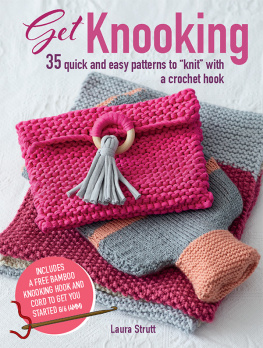
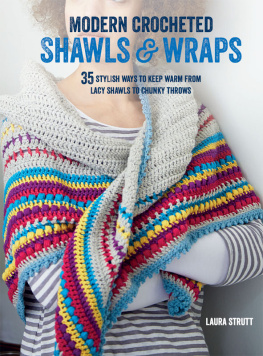
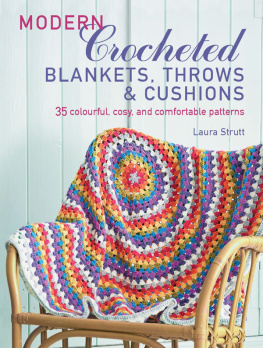
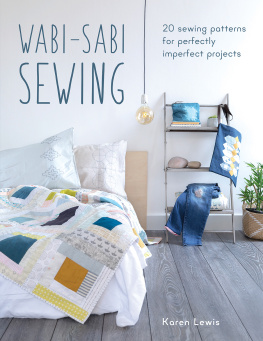
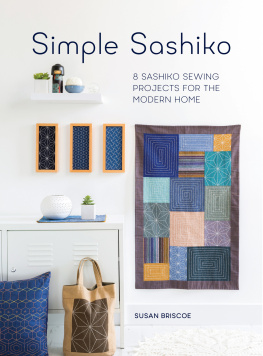
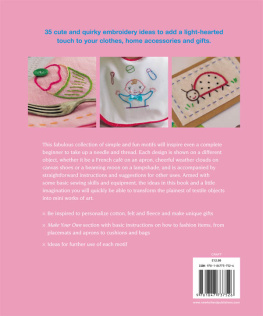
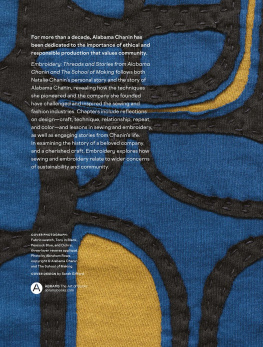

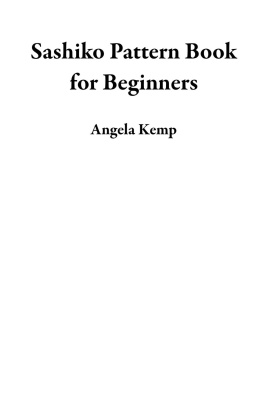
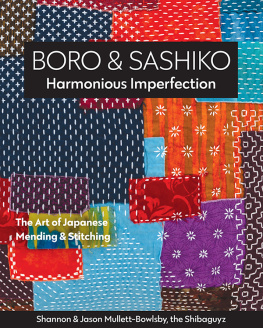


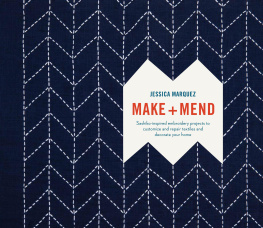


 simple hand sewing 35 SLOW STITCHING AND MINDFUL MENDING PROJECTS
simple hand sewing 35 SLOW STITCHING AND MINDFUL MENDING PROJECTS  laura strutt
laura strutt 
 To Ethan Wolf and Elkie Raven, fiercely and forever. Published in 2022 by CICO Books An imprint of Ryland Peters & Small Ltd
To Ethan Wolf and Elkie Raven, fiercely and forever. Published in 2022 by CICO Books An imprint of Ryland Peters & Small Ltd  Contents
Contents 
 Introduction Creativity is an enormous part of my life and working on a craft pastime is one of my favorite ways to unwind and relax, as it is for so many people.
Introduction Creativity is an enormous part of my life and working on a craft pastime is one of my favorite ways to unwind and relax, as it is for so many people. 
 CHAPTER 1 at home Square Pieced Coasters Working with small squares of different fabrics, you can layer and stitch to create a larger, simple pieced square. Team this with a soft batting (wadding) to transform it into a practical coaster. SKILL RATING YOU WILL NEED For each coaster Main fabric: mustard cotton, 5 x 10in (12.5 x 25cm) Accent fabrics: 2 pieces of print cotton, each 5in (12.5cm) square Batting (wadding): 5in (12.5cm) square Sewing thread in complementary color Quilting cotton in complementary color Scissors Rotary cutter, cutting mat, and ruler (optional) Pins Sewing needle, general purpose Iron Sewing needle, quilting FINISHED MEASUREMENTS 4in (11.5cm) square STITCHES USED Backstitch (see )
CHAPTER 1 at home Square Pieced Coasters Working with small squares of different fabrics, you can layer and stitch to create a larger, simple pieced square. Team this with a soft batting (wadding) to transform it into a practical coaster. SKILL RATING YOU WILL NEED For each coaster Main fabric: mustard cotton, 5 x 10in (12.5 x 25cm) Accent fabrics: 2 pieces of print cotton, each 5in (12.5cm) square Batting (wadding): 5in (12.5cm) square Sewing thread in complementary color Quilting cotton in complementary color Scissors Rotary cutter, cutting mat, and ruler (optional) Pins Sewing needle, general purpose Iron Sewing needle, quilting FINISHED MEASUREMENTS 4in (11.5cm) square STITCHES USED Backstitch (see )  Mindful Stitching Taking the time to work on slow projects for the home is great way to build a slow-stitching practice into your daily life.
Mindful Stitching Taking the time to work on slow projects for the home is great way to build a slow-stitching practice into your daily life.  Cut the fabrics and batting (wadding) to the measurements using scissors or a rotary cutter, mat, and ruler. Cut two 5in (12.5cm) squares from the main fabric.
Cut the fabrics and batting (wadding) to the measurements using scissors or a rotary cutter, mat, and ruler. Cut two 5in (12.5cm) squares from the main fabric. Layer two squares of fabric with right sides facing, to include one main fabric and one print accent fabric in each pair. Pin together.
Layer two squares of fabric with right sides facing, to include one main fabric and one print accent fabric in each pair. Pin together.  Using the general-purpose sewing needle and thread, join the two pieces together along one side, using a neat backstitch and working with a in (5mm) seam allowance. Repeat to join the second pair of squares.
Using the general-purpose sewing needle and thread, join the two pieces together along one side, using a neat backstitch and working with a in (5mm) seam allowance. Repeat to join the second pair of squares.